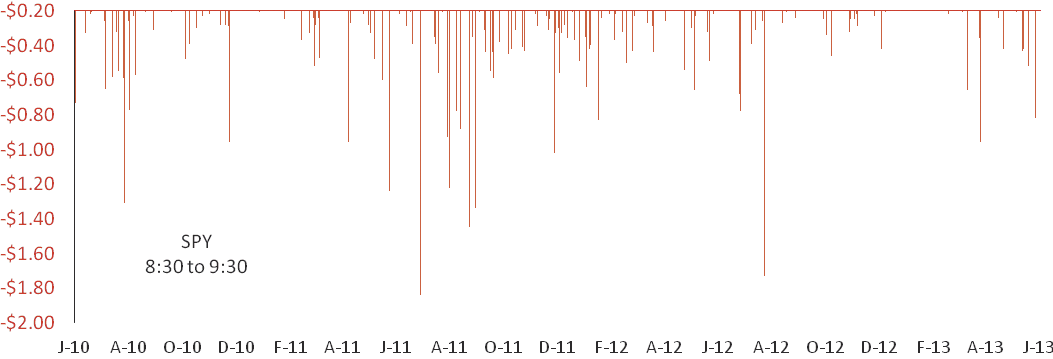MONEY MANAGEMENT
Stops Ahead
Trading Without A Backstop
Part 2
by Anthony Trongone, PhD, CTA, CFP
Placing protective stops affects your trading performance in good and bad ways. Should you or shouldn’t you use them? Here in part 2 of this series, we take a look.
Despite the consensus of trading literature advocating the use of a protective stop-loss order, so far, this analysis does not appear to support this statement. In part 1 of my study published last month in the August 2013 issue of Stocks & Commodities, I examined the results of taking a long position from 9:30–10:30 am (that is, in the opening hour of trading) and the effect of using certain percentage stops. Here in part 2, I’ll expand on the earlier analysis.
BACKGROUND
In the previous study, I took a long position in the spiders (SPDR S&P 500 ETF Trust) at 9:30 am, along with a stop-sell order at various percentages below this opening (9:30 am) price. If the stop order did not fill, I promptly offset the long position at 10:30 am ET.
The findings in the study I will present here expand the earlier analysis from 743 to 764 trading days (June 1, 2010–June 12, 2013) to once again obtain the performance results. Since most active traders do not enter into trading decisions blindly, I began experimenting using a stop order with various trading systems. Last month in part 1, I ran an analysis using early morning volume (7:30–8:30 volume greater than two million shares) to assess the effect on trading the spiders (SPY) in the opening hour. Despite the $3.32 loss in 165 trading days, when using a 0.25% stop (below the 9:30 price), there were just 98 stop fills but a profit of $2.27. When this same condition was present, a 0.50% stop (below the 9:30 price) resulted in 64 stop fills, but it produced a loss of -$5.39.
The benefit of applying a stop order to a long position is already questionable; however, it gets even more complicated because the question of what percentage to use when entering a protective backstop can make the difference in your bottom line.

FIGURE 1: 8:30–9:30 HOURLY DROP OF $0.20 OR MORE (<= -$0.20). What effect does this excessive loss in the preceding hour have on the opening hour of trading? Should we take a long position at the ringing of the opening bell together with a protective stop-loss order?
Excerpted from an article originally published in the September
2013 issue of Technical Analysis of Stocks & Commodities magazine. All rights reserved. © Copyright 2013, Technical Analysis, Inc.
Return to Contents
